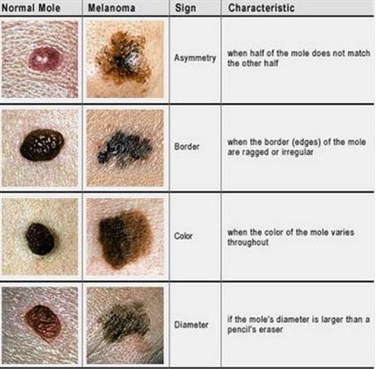How to spot a melanoma from a mole

Melanomas are a cancerous growth caused by DNA damage to the skin, usually from the ultraviolet rays of the sun or a tanning bed. This DNA damage mutates skin cells and causes them to multiply rapidly, forming malignant tumours.
If found early, melanomas are almost always curable. If not, things can get really bad: melanomas are not only the most common form of skin cancer, but they kill the most people.
We really need to worry about skin cancer with the hole in the ozone, as New Zealand and Australia have the highest rates of melanomas in the world.

What do they look like?
A melanoma is not a mole, but it may look like one, and may develop from one. Here are a few key things that differentiate a regular spot from a mole:
- Regular moles generally have smooth and even borders, while an early melanoma's border will likely be uneven.
- A mole should be roughly symmetrical, while a developing melanoma will likely have an uneven shape.
- Harmless moles are generally smaller than the eraser on a pencil. Anything larger could be dangerous.
- Multiple colours on the same skin spot are an obvious warning sign, as is any change in colour over time.
In fact, any change is a big warning sign. Harmless moles usually remain exactly the same. If your moles are changing, or becoming itchy, crusty, or bloody, you should definitely get them checked out.
None of these rules are concrete, and anyone with many moles should have their skin tested by a doctor.
Who is most at risk?
Anyone can get melanomas, but certain people are more at risk.
Lighter skinned races, who sunburn easily, are the most likely of developing melanomas. While they do occur in children, those aged over 45 are the most at risk. Males are more at risk of melanomas, but only slightly.
These risk factors are associated with regular melanomas - certain rare melanomas are a risk for everyone.
Are they curable?
If spotted early, melanomas are almost always curable by surgery. If not, the cancer can quickly advance to other parts of the body, where it becomes harder to treat and possibly fatal.
First appeared on Stuff.co.nz
Related links:
Five foods that make your skin look healthier
A quick guide to the healthiest oils for better skin, joints and wellbeing
MPs take their kit off in the name of melanoma awareness
